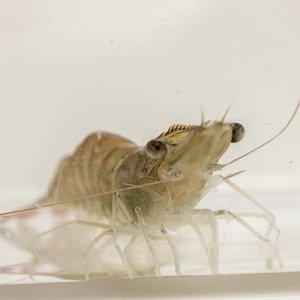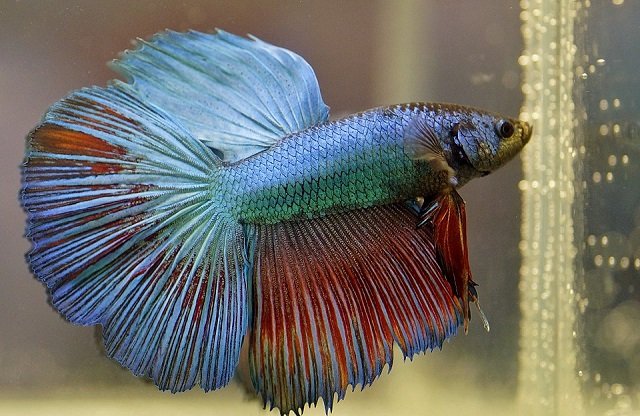
Early and precise disease detection is crucial for managing shrimp health and ensuring the sustainability of farming operations. While image processing has been explored, existing models often struggle with accuracy, particularly when detecting multiple diseases or identifying subtle symptoms.
Researchers from E.G.S. Pillay Engineering College, SRM Institute of Science and Technology, and University College of Engineering have developed a novel approach using advanced artificial intelligence (AI) to tackle this challenge, offering a more robust and accurate method for identifying various shrimp diseases.
The challenge: early and accurate detection
Identifying shrimp diseases quickly is challenging. Traditional methods, such as manual inspection or biochemical testing, can be slow and labor-intensive. Even existing automated systems using image processing and standard deep learning models like Convolutional Neural Networks (CNNs) have limitations. They may struggle to:
- Capture complex spatial relationships in images, especially when symptoms are subtle or scattered.
- Handle variations in image quality due to lighting, noise, or other factors.
- Accurately detect multiple types of diseases using a single model.
These limitations hinder timely intervention and can lead to substantial losses in shrimp farms.
A novel AI solution: enhanced recurrent capsule network (ERCN)
To overcome these obstacles, the researchers proposed a new model called the Enhanced Recurrent Capsule Network (ERCN), combined with a hybrid optimization algorithm. This sophisticated deep learning model is specifically designed to address the complexities of shrimp disease detection.
How it works
Advanced feature extraction
Unlike traditional CNNs, ERCN uses capsule networks to better understand spatial patterns and hierarchies in shrimp images (such as the position and orientation of disease indicators). It also incorporates a recurrent layer (specifically LSTM) to analyze temporal dependencies, allowing it to track how disease symptoms evolve over time in image sequences.
Attention mechanisms
The model leverages spatial and channel attention mechanisms, which act like highlighters, helping it focus on the most relevant parts of the shrimp image (e.g., specific spots or gill discoloration) and the most informative features for distinguishing diseases while ignoring irrelevant background noise.
Stay Always Informed
Join our communities to instantly receive the most important news, reports, and analysis from the aquaculture industry.
Feature fusion
Information about local details (from capsules) and global/temporal context (from the recurrent layer) is combined through a dual-level feature fusion process for improved accuracy.
Hybrid optimization
To maximize performance, a hybrid optimization algorithm combining Harris Hawks Optimization (HHO) and Marine Predators Algorithm (MPA) is used. This intelligently fine-tunes ERCN’s parameters to achieve the highest possible accuracy.
Classification
The final fused features are fed into a classification layer to identify the specific disease present (or its absence).
Impressive Results
The researchers tested their optimized ERCN model using a dataset of 1,599 images covering six common shrimp diseases:
- Black Gill Syndrome
- Taura Syndrome Virus (TSV)
- White Spot Syndrome Virus (WSSV)
- Yellow Head Virus (YHV)
- Infectious Hypodermal and Hematopoietic Necrosis Virus (IHHNV)
- Vibriosis
The results were highly promising:
- High Accuracy: The model achieved an overall disease detection accuracy of 95.2%.
- Strong Performance Metrics: It demonstrated excellent precision (94.9%), recall (93.5%), and F1-score (94.6%).
- Superiority Over Existing Models: ERCN significantly outperformed conventional deep learning models like CNN, RNN, LSTM, GRU, and VGG16 in comparative tests. For example, its accuracy was 3% to 5% higher than these standard methods.
- Impact of Optimization and Attention: Ablation studies confirmed that both hybrid optimization and attention mechanisms significantly enhanced the model’s performance. Optimization alone improved accuracy by over 6%, while adding both attention modules further boosted accuracy by a similar margin compared to a baseline model without attention.
- Real-Time Potential: The model showed promise for practical application, with an average detection time of 58 ms per image (approximately 17 frames per second) on the tested hardware.

Implications for shrimp farming
This research represents a significant advancement in automated shrimp disease detection. The optimized ERCN model offers a powerful tool for:
- Early Warning: Detecting diseases such as White Spot Syndrome Virus (WSSV), Yellow Head Virus (YHV), or Vibriosis faster and more accurately than previous methods.
- Improved Management: Enabling aquaculturists to take timely action, potentially reducing mortality rates and ensuring farm productivity.
- Multi-Disease Surveillance: Providing a single, robust system capable of identifying a variety of common shrimp diseases.
While the model has higher computational complexity than simpler algorithms, its superior detection performance justifies its use. Future research could focus on further optimizing its computational efficiency.
Conclusion
This study presents an optimized model called the Enhanced Recurrent Capsule Network (ERCN) for detecting various shrimp diseases. The optimized ERCN model effectively captures both spatial features (patterns in images) and temporal characteristics (changes over time) from segmented images of diseased shrimp.
Experimental results demonstrate the superior performance of the proposed model, achieving a 95.2% detection accuracy, surpassing existing models such as CNN, RNN, LSTM, GRU, and VGG16 (whose accuracies ranged from 89.8% to 92.3%).
The study concludes that the optimized ERCN model with hybrid optimization is a highly effective and accurate tool for detecting multiple shrimp diseases, outperforming conventional deep learning techniques. However, its higher computational complexity remains an area for future improvement.
Contact
A. Sundar Raj
Department of Biomedical Engineering, E.G.S. Pillay Engineering College
Nagapattinam, 611002, Tamil Nadu, India
Email: drasr18@gmail.com
Reference (open access)
Raj, A. S., Senthilkumar, S., Radha, R., & Muthaiyan, R. (2025). Enhanced recurrent capsule network with hyrbid optimization model for shrimp disease detection. Scientific Reports, 15(1), 1-24. https://doi.org/10.1038/s41598-025-94413-3
Editor at the digital magazine AquaHoy. He holds a degree in Aquaculture Biology from the National University of Santa (UNS) and a Master’s degree in Science and Innovation Management from the Polytechnic University of Valencia, with postgraduate diplomas in Business Innovation and Innovation Management. He possesses extensive experience in the aquaculture and fisheries sector, having led the Fisheries Innovation Unit of the National Program for Innovation in Fisheries and Aquaculture (PNIPA). He has served as a senior consultant in technology watch, an innovation project formulator and advisor, and a lecturer at UNS. He is a member of the Peruvian College of Biologists and was recognized by the World Aquaculture Society (WAS) in 2016 for his contribution to aquaculture.




